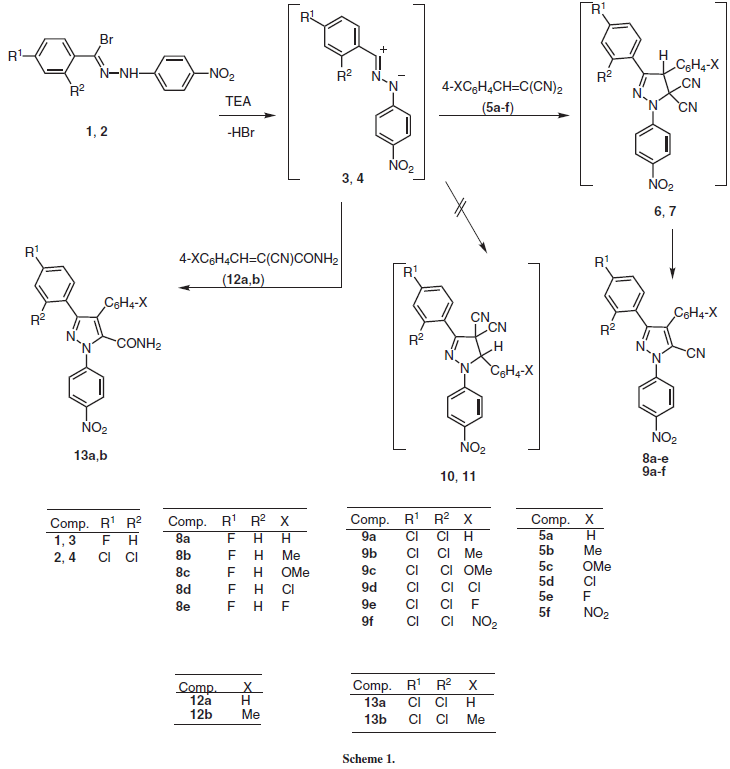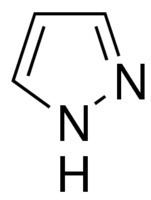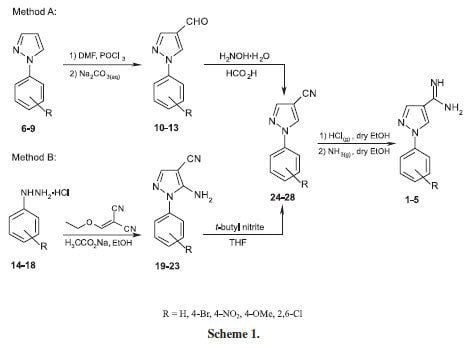Formula C3H4N2 | ||
Pyrazole meaning
Pyrazole is an organic compound with the formula C3H3N2H. It is a heterocycle characterized by a 5-membered ring of three carbon atoms and two adjacent nitrogen atoms. Pyrazole is a weak base, with pKb 11.5 (pKa of the conjugated acid 2.49 at 25 °C). Pyrazoles are also a class of compounds that have the ring C3N2 with adjacent nitrogen atoms. Notable drugs containing a pyrazole ring are celecoxib (Celebrex) and the anabolic steroid stanozolol.
Contents
- Pyrazole meaning
- Preparation and reactions
- History
- Conversion to scorpionates
- Occurrence and uses
- Related heterocycles
- References

Preparation and reactions
Pyrazoles are synthesized by the reaction of α,β-unsaturated aldehydes with hydrazine and subsequent dehydrogenation:
Substituted pyrazoles are prepared by condensation of 1,3-diketones with hydrazine. For example, acetylacetone and hydrazine gives 3,5-dimethylpyrazole:
CH3C(O)CH2C(O)CH3 + N2H4 → (CH3)2C3HN2H + 2 H2OHistory

The term pyrazole was given to this class of compounds by German Chemist Ludwig Knorr in 1883. In a classical method developed by German chemist Hans von Pechmann in 1898, pyrazole was synthesized from acetylene and diazomethane.
Conversion to scorpionates

Pyrazoles react with potassium borohydride to form a class of ligands known as scorpionate. Pyrazole itself reacts with potassium borohydride at high temperatures (~200 °C) to form a tridentate ligand known as Tp ligand:
Occurrence and uses

In medicine, derivatives of pyrazoles are used for their analgesic, antinociceptive, anti-inflammatory, antipyretic, antiarrhythmic, tranquilizing, muscle relaxing, psychoanaleptic, anticonvulsant, monoamineoxidase inhibiting, antidiabetic, antifungal, and antibacterial activities.
In 1959, the first natural pyrazole, 1-pyrazolyl-alanine, was isolated from seeds of watermelons.
Related heterocycles
Imidazole is an analog of pyrazole with two non-adjacent nitrogen atoms. In isoxazole, another analog, the nitrogen atom in position 1 replaced by oxygen.
